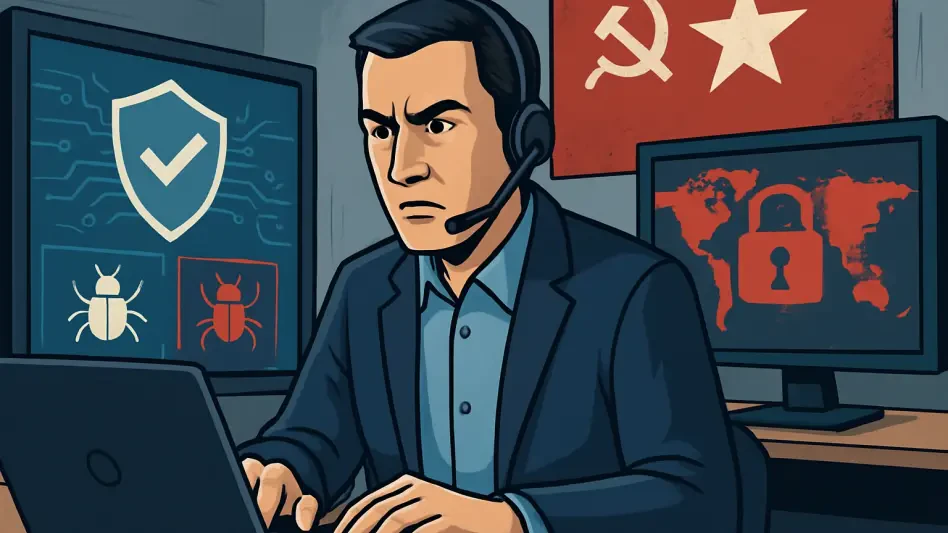Amidst a landscape of shrinking resources and significant workforce reductions, the Cybersecurity and Infrastructure Security Agency (CISA) stands as a critical bulwark in safeguarding national cybersecurity. At a prominent industry event, senior officials from the agency shared insights into how they are navigating these turbulent times under stringent administrative constraints. Despite losing a substantial portion of their staff due to downsizing policies, CISA remains steadfast in its commitment to protecting federal networks and supporting critical infrastructure providers. This resilience is not just a reaction to adversity but a proactive push toward innovation and efficiency. The agency’s determination to maintain its mission, even with fewer hands on deck, paints a compelling picture of adaptability in the face of adversity. As external pressures mount, the focus on core services and strategic partnerships offers a glimpse into how CISA plans to weather the storm while continuing to deliver vital cybersecurity support.
Navigating Resource Constraints
Adapting to a Smaller Workforce
The recent workforce purge has undeniably placed CISA under immense pressure, with a reported loss of nearly one-third of its employees due to administrative cuts. Yet, senior leaders have emphasized the strength and dedication of the remaining team as a cornerstone of their strategy to push forward. Acting Head of the Cybersecurity Division, Chris Butera, highlighted the relentless efforts of staff who have worked tirelessly to address significant vulnerabilities, such as those found in widely used software platforms. Their ability to respond swiftly to threats, even with diminished numbers, showcases a level of expertise and commitment that keeps the agency operational. This focus on talent retention and maximization of existing skills is crucial as CISA redefines how to achieve its objectives with fewer resources, ensuring that essential services do not falter despite the challenging environment.
Innovating Under Pressure
Beyond merely coping with a reduced headcount, CISA is actively seeking innovative ways to maintain its impact on national cybersecurity. CIO Robert Costello has articulated a vision of progress rather than retreat, pointing to new directions that prioritize efficiency through technological advancements. The agency is rolling out updated tools for cyber operators regularly, ensuring that those on the front lines have the necessary support to tackle emerging threats. This proactive approach is a direct counter to the constraints imposed by budget and staffing cuts, demonstrating a refusal to let external limitations dictate the scope of their mission. By focusing on internal development and equipping employees with cutting-edge resources, CISA aims to bridge the gap left by workforce reductions, maintaining a robust defense against cyber threats while adapting to a leaner operational model.
Strengthening Partnerships and Services
Enhancing Industry Collaboration
Despite a reduced presence at major industry gatherings due to travel and participation restrictions, CISA remains deeply committed to fostering collaboration with private industry and state and local governments. This year, only a minimal number of representatives spoke at a key cybersecurity conference, a stark contrast to previous years, yet the message from agency officials was clear: partnerships are non-negotiable. To address accessibility concerns, plans are underway to launch a new industry engagement portal by the end of the year, designed to streamline interactions for private companies seeking CISA’s expertise. Additionally, enhancements to free cybersecurity services, such as automated features and user-friendly tracking portals, are being introduced to support over 11,000 partners in vulnerability scanning. These initiatives underscore a dedication to maintaining strong ties with external stakeholders, even amidst internal challenges.
Advancing Key Programs and Technology
CISA’s commitment to foundational cybersecurity programs remains unwavering, as evidenced by continued investment in initiatives like MITRE’s Common Vulnerabilities and Exposures (CVE) program, which is vital to the broader ecosystem. Alongside this, the agency has successfully utilized administrative subpoenas to alert thousands of organizations to vulnerable systems, achieving a high rate of compliance in securing those systems. On the technological front, efforts to modernize IT infrastructure are progressing, with a target to complete migration to cloud-based environments by the fiscal year’s end on September 30. Furthermore, the integration of artificial intelligence into operations offers promising avenues for defenders to analyze extensive data and counter sophisticated threats. These advancements reflect a strategic focus on leveraging technology and sustained programs to bolster cybersecurity, ensuring that CISA’s services remain effective despite resource constraints.
Reflecting on a Path Forward
Building Resilience Through Strategy
Looking back, CISA’s journey through workforce cuts and policy restrictions reveals a narrative of resilience and strategic adaptation. Senior officials, speaking at a significant industry event, painted a picture of an agency that refused to be defined by its limitations. Instead, they channeled efforts into fortifying internal capabilities and maintaining critical services that protect national infrastructure. The emphasis on talent, innovation, and technological upgrades stands as a testament to a deliberate approach in overcoming adversity. By focusing on what could be controlled—such as tool development and IT modernization—the agency managed to uphold its mission even as external pressures mounted. This period of challenge highlighted the importance of adaptability in ensuring that cybersecurity defenses remain robust against an ever-evolving threat landscape.
Charting Future Directions
As CISA reflects on its recent struggles, the path ahead crystallizes around actionable steps to sustain momentum. Prioritizing the rollout of enhanced cybersecurity services and new engagement platforms signals a clear intent to strengthen ties with industry partners. Investing in emerging technologies like artificial intelligence offers a forward-looking solution to analyze threats more effectively, while completing cloud migration marks a significant milestone in operational efficiency. For the cybersecurity community, the takeaway is a call to support CISA’s initiatives by advocating for resources and policies that bolster its capacity. Moving forward, fostering dialogue between government agencies, private entities, and local governments could pave the way for a more collaborative defense framework, ensuring that the agency’s efforts to protect critical infrastructure are not just sustained but amplified in the face of future challenges.








